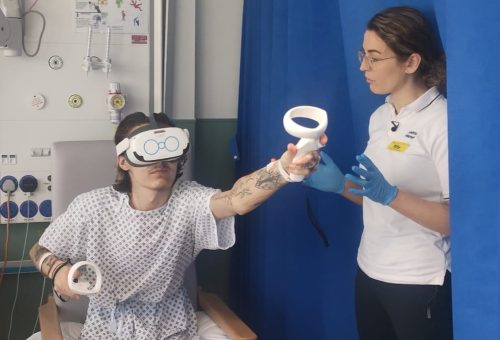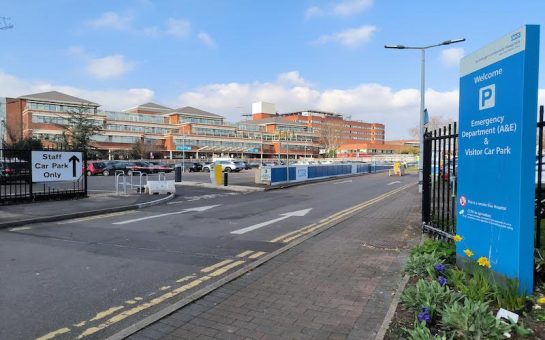![]() By Catrin Picon
By Catrin Picon
January 15, 2020 15.25
Follow @SW_Londoner
Deaths due to seizures increased in the UK every year from 2012 to 2016.
Data from the Office for National Statistics reveals that deaths with a cause given as ‘death by seizure’ have increased by an average of 5.24% every year.
The biggest increase, nearly 5%, occurred in 2012-2013 and could be explained by health inequalities due to the government’s austerity measures and a lack of public understanding around seizures.
Epilepsy Action’s chief executive Phillip Lee said that these findings are ‘shocking’ and ‘completely unacceptable’.
The charity also criticised the healthcare system for often treating neurological conditions as an ‘afterthought.’
Mr Lee said: “The impact of health inequalities on people with epilepsy is clear. Epilepsy is the only neurological condition with a significant relationship between deprivation and mortality.
“It’s also hard not to conclude that the lack of priority given to epilepsy within the healthcare system has directly contributed to the increase in premature mortality rates.
“The health inequalities faced by people with epilepsy must be addressed immediately. Health services for people with epilepsy must be improved now.
“With the right care and support, 20% more people with epilepsy could be seizure free.
“Better seizure control would improve people’s lives and could ultimately reduce the likelihood of death associated with the condition.
“The government and commissioners must act now and give epilepsy the attention it deserves.”
Worldwide 60 million people have epilepsy but anyone can die from a spontaneous seizure.
While 1 in 20 people will have a one off seizure in their lifetime, only 1 in 100 are diagnosed with epilepsy.
Why do deaths due to seizures continue to rise?
Though austerity driven inequality and not knowing the facts could be major reasons behind the rise in deaths, we must also consider other seizure triggers.
SUDEP (Sudden Unexpected Death in Epilepsy) can occur when an area of the body is struggling, and the body increases electrical activity in an effort to resolve the issue. This effort can causes a fatal seizure.
Senior Research Assistant at the Neuroendocrinology Of Social Ties Laboratory, University of Southern California, Elizabeth Seibert said:
“The cause for aberrant seizures unrelated to epilepsy is unknown and does not recur regularly.”
“The seizure is basically abnormal excitation in neurons that quickly spreads to other areas of the brain resulting in some of the symptoms frequently associated with epilepsy depending on the regions where the excitation occurs (for example, the physical shaking could arise out of over excitation in the motor cortex).”
“Long story short, death would depend on the amount of overall excitation and the areas affected.”
SUDEP Action chief executive Jane Hanna OBE said: “This report confirms what our bereaved community have known for over 21 years – that there is much that can be, and needs to be done, to prevent the many needless, avoidable epilepsy deaths each year, many of which are in the young.
“Risk factors for epilepsy mortality are known, including risks linked to SUDEP, which accounts for 50% of epilepsy deaths. But what is lacking is a national steer to address this issue and tackle avoidable epilepsy mortality.”
Neurologists say SUDEP is second only to stroke as a cause of shorter lifespan due to a neurological disorder.
Across the pond in the United States, SUDEP kills an estimated 2,600 people a year or one in 1,000 people with epilepsy.
For people whose seizures are not controlled with medication, the death rate is one in 150.
Epilepsy researcher at New York University (NYU), Dr Daniel Friedman said that about a third of Americans with epilepsy have uncontrolled seizures and could be at high risk of sudden death.
Despite the American Epilepsy Society urging professionals to give patients the facts a national study found that very few neurologists discussed sudden death with people who have epilepsy.
Director of the epilepsy programme at the Children’s National Health System Dr William Gaillard said: “Many of my colleagues, myself included, are paternalistic creatures.
“Many don’t talk about it [SUDEP] because it is a low risk, and there is nothing you can do about it. They’ve made that decision for their patients.”
Director of the Epilepsy Center at NYU Langone Medical Center Dr. Orrin Devinsky said that knowing about it could provide an impetus for patients to work with doctors to get their seizures under control, as death occurs just after a seizure.
Could spreading awareness of SUDEP spike fear or save lives?
Director of the National Institute of Neurological Disorders and Stroke Dr. Walter Koroshetz, faced the question in his own family.
His father who developed epilepsy later in life, had a seizure, fell and died.
But Dr. Koroshetz, who as a neurologist knew about SUDEP, had not mentioned it to his father.
“I did not think it would help him,” Dr. Koroshetz said.
Three years later, another of his uncles developed epilepsy. This time, Dr. Koroshetz had a long discussion about the risk of death with him and he is still alive and well.
Dr. Koroshetz says there is not much adults can do to protect themselves because the sudden death risk is mainly with uncontrolled seizures.
SUDEP is not as recent as may seem as George Washington’s daughter, Patsy Curtis, may have died from it in 1773, age 17.
Washington wrote: “She rose from dinner about four o’clock in better health and spirits than she appeared to have been in for some time.
“Soon after which she was seized with one of her usual fits, and expired in it, in less than two minutes, without uttering a word, a groan, or scarce a sigh. This sudden and unexpected blow, I scarce need.”
Strangely, many neurologists say they did not learn about SUDEP in medical school.
Professor of Neurology at Case Western Reserve University Dr Samden Lhatoo said: “Even among neurologists, it wasn’t well known or publicised or talked about until very recently”
Dr. Devinsky, 59, said: “People I trained with at great medical institutions never discussed it.
“One research goal is to learn the true incidence of the phenomenon and to study brains from patients who died from it but it has not been easy.
“Often, especially in older people, the medical examiner will attribute death to a heart problem, even when it is known that the person had epilepsy and there was no evidence the victim had heart disease.” Dr. Devinsky said.




